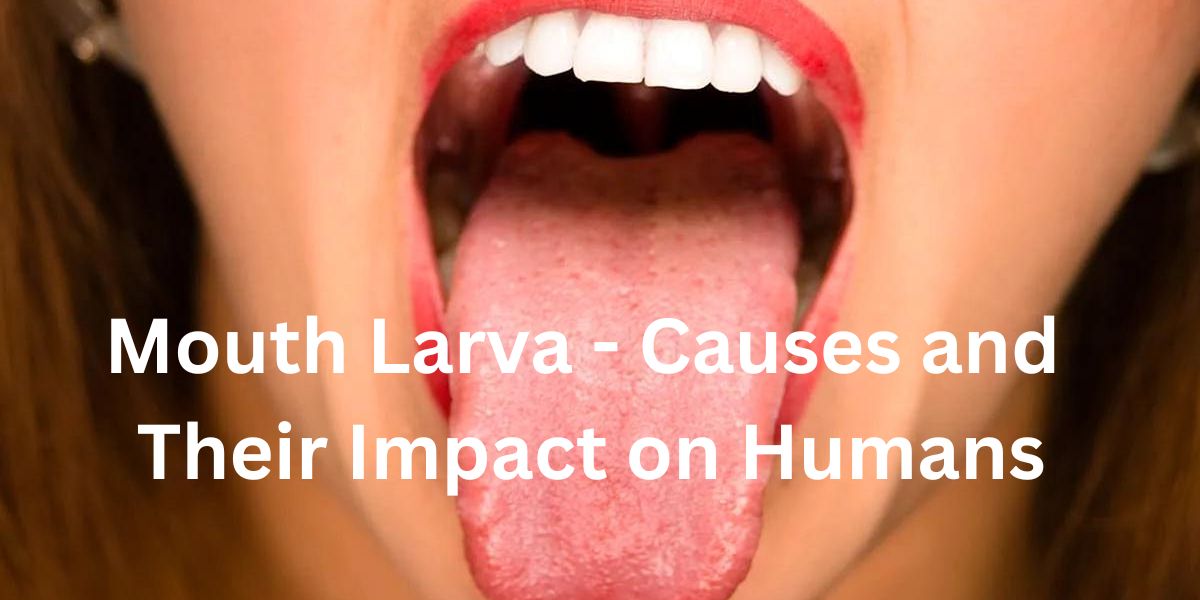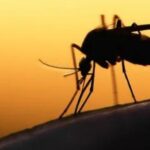Mouth larvae are parasites that hatch and reside there in the oral canals of their human and animal hosts. These parasites are severe ailments also known as oral myiasis.
While this condition is uncommon in humans, individuals residing in or traveling to developing countries might be at risk. Certain factors can increase your vulnerability to oral myiasis.
Let’s dive right into it – the unnerving world of larvae inside your mouth.
What is Mouth Larva?
Mouth larvae are the young stage of specific types of flies. The gums and open sores in the mouth are among the soft tissues that these larvae can enter. While they mostly affect animals in tropical regions, they can also, although rarely, impact humans. Humans might accidentally consume these larvae through food or have flies lay eggs in their wounds, leading to a condition called oral myiasis.
Appearance of Mouth Larva
Mouth larvae, which can be pests, have different looks depending on the type of larva they are.
For instance, screwworm fly larvae are named after their appearance. They have a twisty, screw-like shape with one end rounded and the other end pointed. They start with a creamy white body that turns reddish pink as they grow.
Flesh fly larvae, on the other hand, are long and white with thin heads. They can reach around 9 to 13 millimeters in length as they mature. Their bodies get darker as they move through their growth stages.
Larva in mouth of human botflies are often called white maggots. They transform as they go through three stages of development. At first, they look like small worms with one end wider than the other. In the second stage, they become bigger and take on a bottle-like shape. Finally, in the third stage, their bodies become more cylindrical. At each stage, they have dark spines encircling their bodies.
What do Mouth Larvae Consume?
These parasites consume either live or dead tissue from their hosts in order to thrive. Additionally, they ingest body fluids and any food particles that may become stuck in the mouth. While they chow down on the host, these larvae release toxins and call in bacteria that let out stuff that breaks down the host’s tissue. This breakdown actually helps the larvae—they can then more easily dig in and keep munching away.
Where do Mouth Larva come from?
You might have ended up with mouth larvae by unknowingly swallowing their eggs, or by having flies lay eggs close to a cut or sore. Sometimes, larvae can even get into your nose or ears. There’s another way too – you could get bitten by mosquitoes or ticks that carry these larvae. In tropical spots where this problem is more common, certain flies might even lay their eggs on clothes left outside to dry.
Imagine you’re enjoying a sunny day outdoors when suddenly, your mouth starts to feel a bit off. You might brush it off as a stray hair or a crumb from your snack, but it could very well be a mouth larva saying hello.
These larvae, often known as oral myiasis larvae, are the offspring of flies. They start as eggs laid in environments where these insects thrive – think garbage, animal waste, or poor hygiene conditions. If you’re in close proximity to such environments, these larvae might just hitch a ride into your mouth.
Types of Mouth Larvae
There are more than 80 types of flies that can give you those mouth larvae troubles. Let’s talk about four kinds that have been found in humans:
Screwworm fly (Cochliomyia hominivorax)
The screwworm fly, known as Cochliomyia hominivorax, hangs out in warm areas of the Americas like the Caribbean and parts of South America. These flies are a major discomfort because they lay their eggs in sores or sticky places.
Human botfly (Dermatobia hominis)
Dermatobia hominis lives around Central and South America. The grown-up botflies kinda look like bumblebees and they plant their larvae in the skin, mouths, and other tissues of mammals.
Flesh fly (Sarcophagidae)
Sarcophagidae is all over the place – you’ll find them in Greenland, Central America, and North America. These flies are a bit gross – they can mess with living creatures and munch on the remains of both humans and animals.
Causes of Mouth Larvae
Cause of mouth larva usually targets people who have trouble shutting their mouths properly. This oral myiasis thing is connected to situations like:
- Drinking a lot (Alcoholism)
- Having a tooth pulled out (Dental Extraction)
- Dealing with mental health problems (Mental Illness)
- Breathing through your mouth when you’re asleep
- Getting an infection while in the hospital (Nosocomial Infection)
- Struggling with psychiatric issues (Psychiatric Disorders)
- Having seizures
- Getting older and losing mental sharpness (Senility)
- Misusing substances
It’s a bit of an odd mix, but these are the things that can lead to those mouth larvae.
Can Mouth Larva Cured?
Medical professionals have ways to handle mouth larvae – they can use things like chloroform, mercuric chloride, mineral oil, or turpentine directly on the affected area. These things basically smother the larvae and make them come out of your mouth tissues to get some air.
Once that’s done, a doctor usually takes out the larvae through a little surgical procedure using special pincers or hemostats. Sometimes, they might inject lidocaine into cysts to help push the larvae up to the surface.
Patients might need some antibiotics to deal with any infections these larvae caused.
Preventive Measures of Mouth Larva
Stick to Your Oral Hygiene Routine
Brush and floss regularly to maintain a clean mouth that’s less welcoming to unwanted visitors.
Protect Any Open Wounds
If you have any cuts, sores, or wounds in your mouth, keep them clean and covered to minimize the risk of larvae infestation.
Stay Clean
Avoid environments that are breeding grounds for insects and make sure to wash your hands before you touch your mouth or start eating.
Regular Dental Check-ups
Schedule regular visits to your dentist.
Summary
Mouth larvae, those tiny but troublesome critters, can find their way into our mouths in various ways. Larvae feed on human tissues and may appear if you have open wounds, dental procedures, or alcoholism disorders. But don’t worry, doctors can deal with them using certain stuff that makes the larvae leave the tissue. And to keep these little troublemakers away, just remember to keep your mouth clean, cover any cuts, and wash your hands.
















